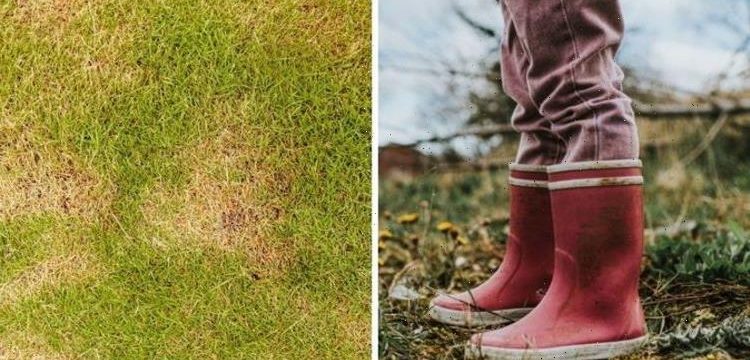Gardening tips: Can you reuse pot compost
We use your sign-up to provide content in ways you’ve consented to and to improve our understanding of you. This may include adverts from us and 3rd parties based on our understanding. You can unsubscribe at any time. More info
Although grass growth slows in the winter, meaning it may not need to be cut, maintaining it is extremely important. This includes raking up leaves, as well as making sure it doesn’t get waterlogged, all of which can result in a damaged grass.
Speaking to Express.co.uk, one expert has shared top tips on how to maintain a healthy lawn this winter.
Gardening expert at Hayes Garden World, Angela Slater, explained: “If the lawn is wet and waterlogged make sure you avoid walking over it as this can cause compaction and lead to even greater problems.
“A healthy lawn needs a good even distribution of air pockets to allow the grass to thrive and if the soil is compacted the grass cannot grow and you will be left with soil like concrete and bare patches.”
If the lawn suffers during wet, muddy weather, it is recommended to lay stepping-stones through it to allow easy access.


This can help the grass stay healthy, without causing damage by walking over it.
Another form of damage that can occur to the grass is when walking over it during frosty spells.
Angela said: “Do not walk on the grass if it is frosted as you will break the grass which can lead to brown patches.”
Gardeners who suffer from brown patches on their grass can repair it using edges or patches with turves cut out from other areas of the garden.
DON’T MISS:
DIY couple transform caravan into ‘jaw-dropping’ space for £800 [PICTURES]
Mrs Hinch fan shares ‘cheap’ hack to get rid of washing machine mould [COMMENT]
Nationwide HPI: House price growth reaches double digits [EXPLAINER]
The Royal Horticultural Society (RHS) then recommends cutting all lawn edges to crisp up its appearance, and save work next season.
As well as not walking across the lawn, Angela advised gardeners to rake up leaves as soon as they accumulate.
This is because leaves can block the light, which can result in bare patches appearing on the grass.
They can also stop moisture reaching the grass, which can help it grow, albeit slowly.

When raking up the leaves, gardeners should also deal with any present moss.
Angela said: “Deal with any moss by raking off with a spring rake, treating with a dedicated moss killer and aerating the soil by piercing with a fork at regular intervals.”
However, in order to make leafmould successfully, the moss must be separated from the leaves.
The expert added: “Make some leafmould by placing the leaves in a black plastic bin bag, squeeze out the air, pierce the bottom of the bag and leave in a corner for six months, after which you can use it on herbaceous borders as a mulch and soil improver.
Looking for a new home, or just fancy a look? Add your postcode below or visit InYourArea
“If you don’t want to make leafmould just pile them in an out of the way corner where they will provide a habitat for insects and they will rot down naturally.”
Leafmould can take a couple of years to reach good quality soil conditioner, but can be used for a variety of different gardening jobs.
When maintaining the lawn through the winter months, it is best to keep an eye out for fungal patches.
They can ruin the grass and may need treatment from a professional.
Angela explained that if they are just small toadstools, they will eventually disappear.
She added: “Sometimes a lawn feed can correct the problem.”
Source: Read Full Article
